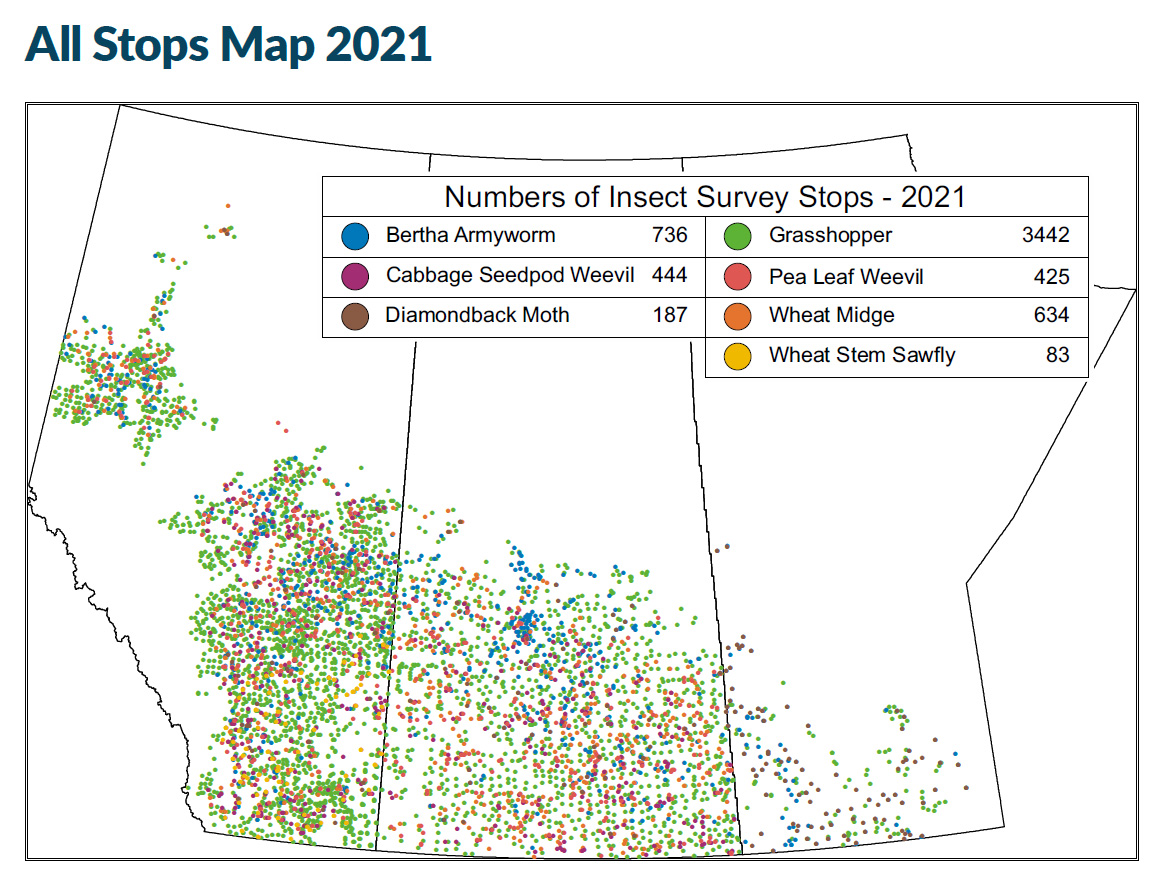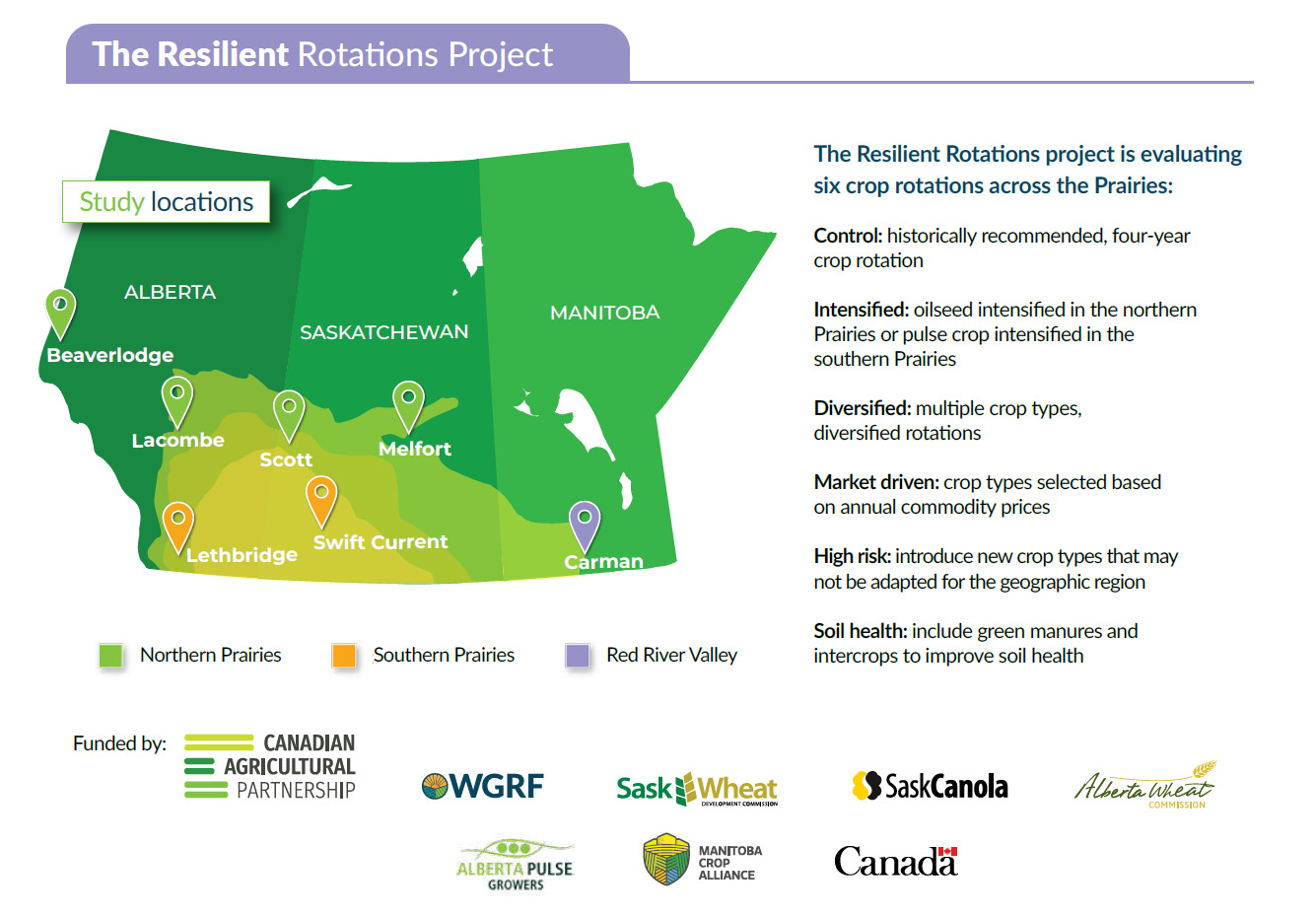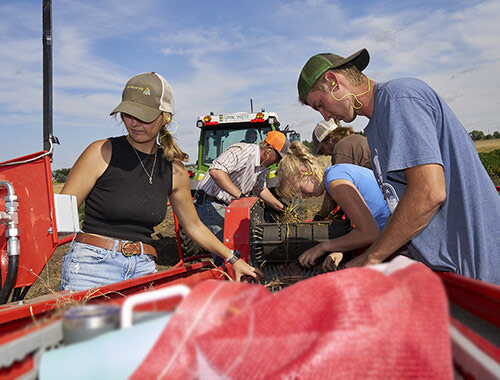Integrated Crop Agronomy Cluster releases research report
Western Grains Research Foundation set out to provide crop growers with research results that help them “tackle widespread agronomic challenges.” A recently released Integrated Crop Agronomy Cluster (Cluster) summary report offers a sampling of the projects and successes stemming from the initiative.
Farming Smarter contributed to several of the research programs conducting small plot and field scale research with lead researchers from Agriculture and Agri-Food Canada (AAFC) and prairie universities.
The projects outlined in the summary include:
- Glyphosate-resistant kochia, DR. Charles Geddes, AAFC
- Spray drift management, Ian Paulson, Prairie Agricultural Machinery Institute, Humboldt
- Crop Disease monitoring network, Dr. Kelly Turkington, AAFC
- Systems productivity, resilience and sustainability, Dr. Kui Liu, AAFC
- Insect pest monitoring, Dr. Meghan Vankosky, AAFC
- Fusarium head blight risk models, Dr. Paul Bullock, University of Manitoba & Dr. Randy Kutcher, University of Saskatchewan
- Western Canadian crop rotations, Dr. Ramona Mohr, AAFC
|
|
|
Image Caption: All stops throughout the insect survey section of this research project in the Prairies |
The summary also includes the success stories of these researchers that stem from the Cluster and its generation of $9 million in research funding over the past five years.
For instance, the Prairie Pest Monitoring Network that provides timely information to crop producers throughout the growing season got its start under this Cluster. So did the Prairie Crop Disease Monitoring Network that “fosters a more cohesive, collaborative approach to field crop disease monitoring for Alberta, Saskatchewan and Manitoba.”
The work of Drs. Kutcher and Bullock attacked the Fusarium Head Blight (FHB) fugus challenge working toward prediction tools and management strategies to keep FHB at bay on the prairies.
Dr. Charles Geddes work focused on tactics to reduce herbicide-resistant kochia on the prairies. Between 1980 and today, tested kochia populations show 50% of plants are herbicide resistant. His work illustrates the benefits of crop rotations and winter crops. His project also investigated row spacing and seeding rates.
Ian Paulson’s work discovered that the machine matters when spraying. His work found sprayers create a wake and it can be detrimental to spray performance.
Dr. Kui Liu, Research Scientist, leads a 5-year project looking for Resilient Rotations. His team takes a holistic approach considering all the factors that influence crop rotation choices. The project has research sites in Alberta, Saskatchewan and Manitoba. They take a systems approach to diversifying crop choices famers can work into rotations.
Dr, Ramona Mohr wants to find solutions for growing corn and soybeans across the prairies as high value crops that can facilitate more diverse crop rotations. She worked with several variations of crop combinations and rotation lengths across the prairie provinces.
All of research funded by the Crop Agronomy Cluster worked toward reducing risk and creating prosperity on prairie farms. To delve into the work and results, visit https://wgrf.ca/research-programming/integrated-crop-agronomy-cluster/ or download the pdf here!
|
|
|
Image Caption: The roadmap for the Resilient Rotations Project, building the regional information for better crop rotations across the Prairies. |





